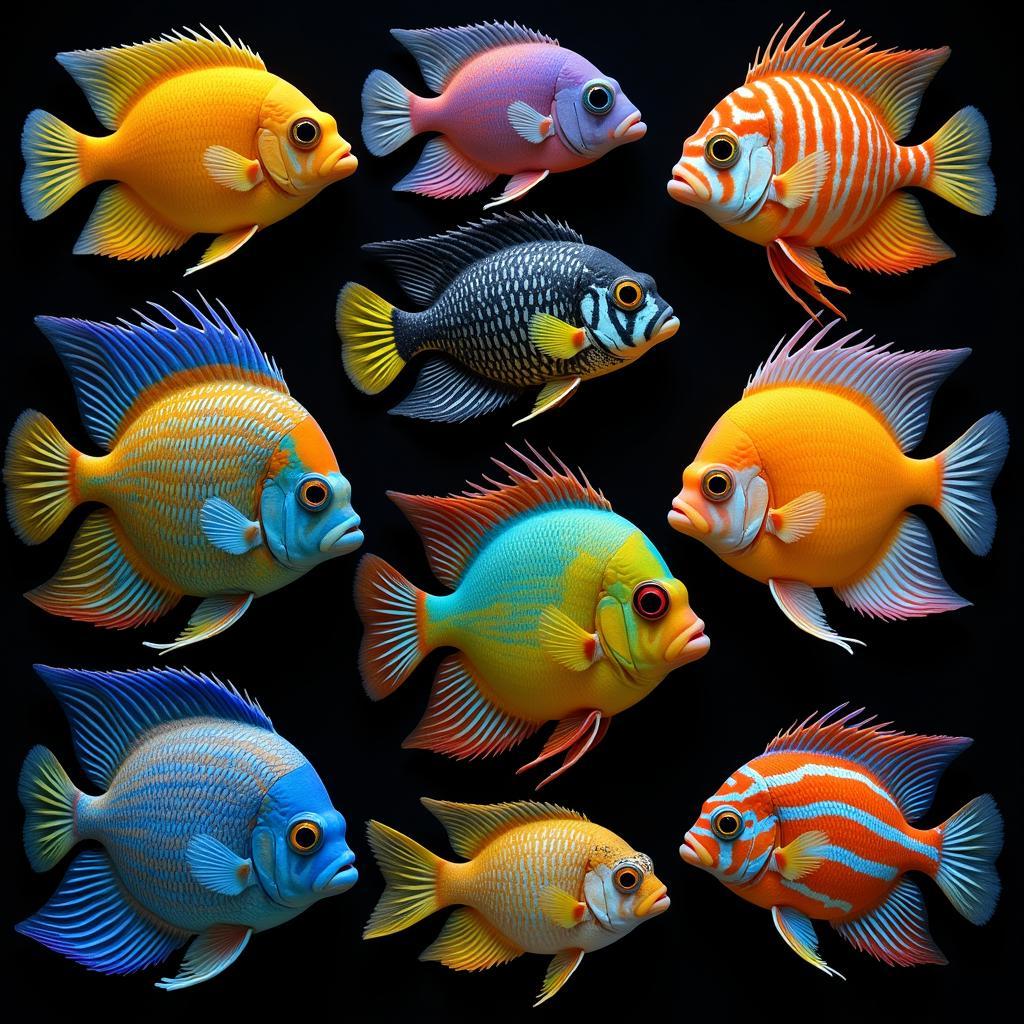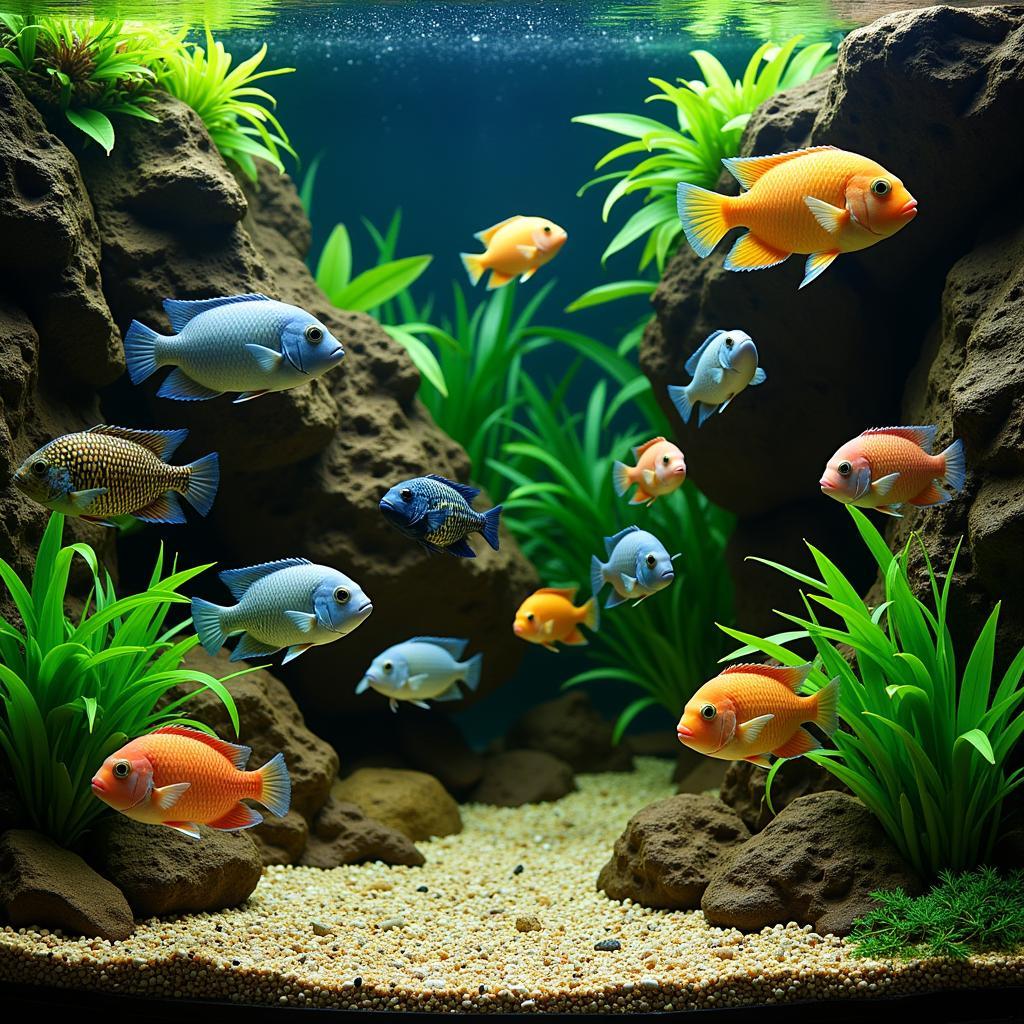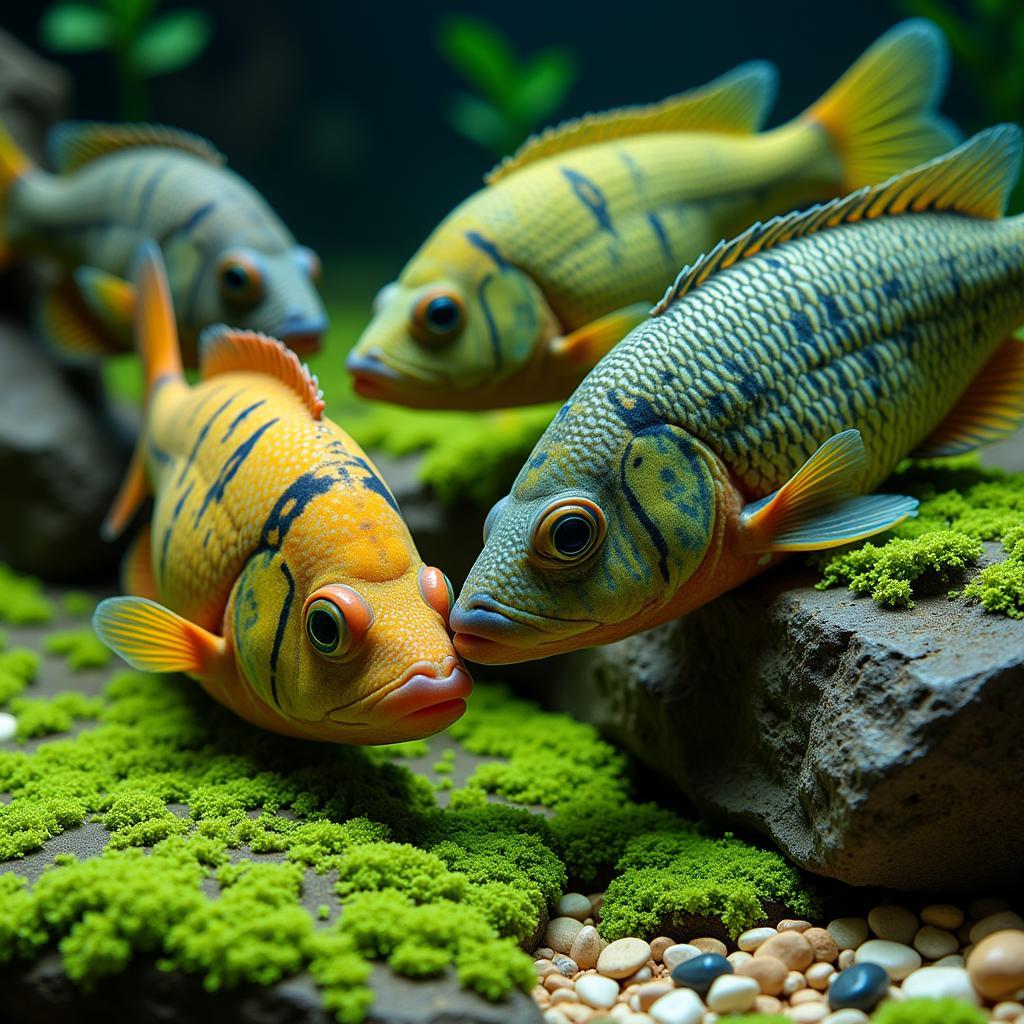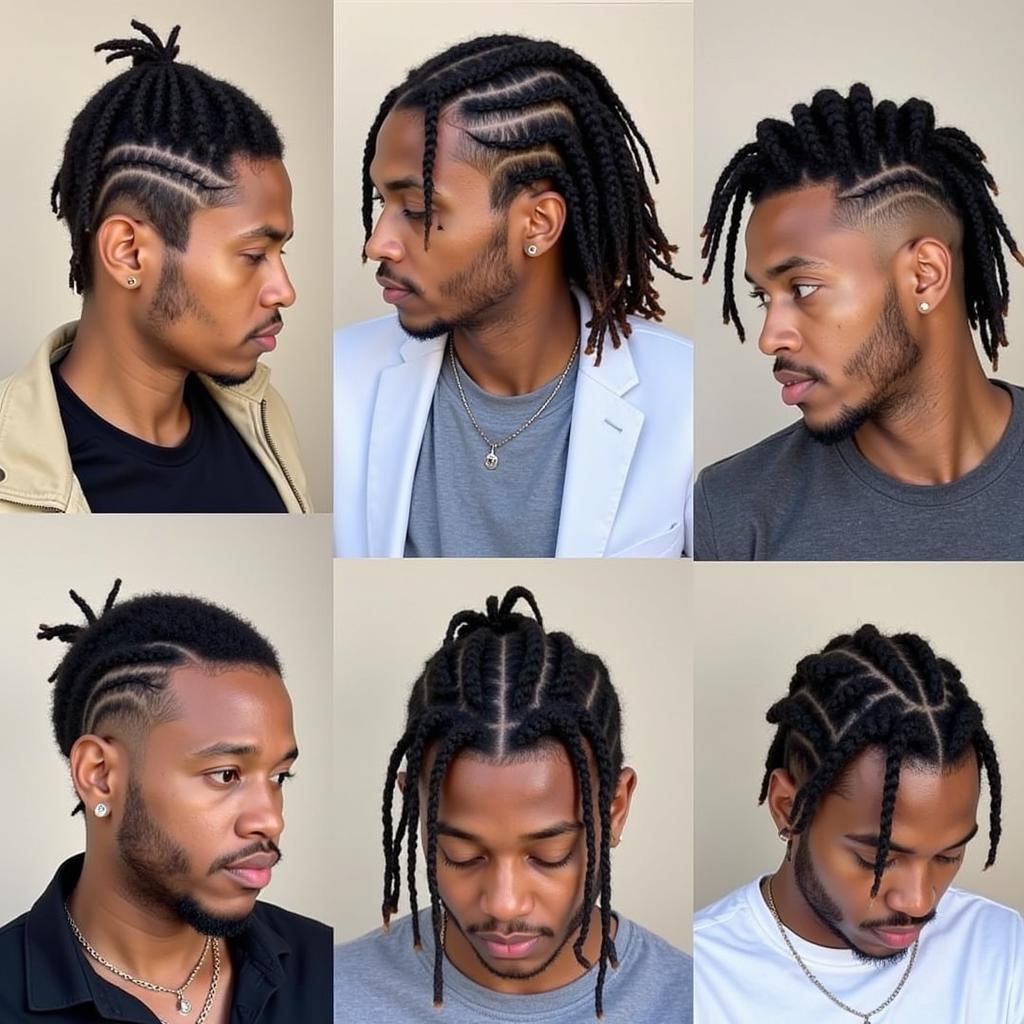African Cichlids Haps and Peacocks for Sale: A Guide to Choosing Your Tank’s Jewels
African cichlids, particularly haps and peacocks, are highly sought-after freshwater aquarium fish due to their vibrant colors, intriguing behaviors, and diverse species. Whether you’re an experienced aquarist or just starting, the prospect of owning these captivating creatures is exciting. This comprehensive guide will explore everything you need to know about African Cichlids Haps And Peacocks For Sale, ensuring you’re well-equipped to provide a thriving environment for these aquatic gems.
Unveiling the Allure of African Cichlids
African cichlids originate from the Great Rift Valley lakes of Africa: Malawi, Tanganyika, and Victoria. These lakes offer diverse habitats, leading to an incredible variety of cichlid species, each with unique adaptations, appearances, and behaviors. Haps and peacocks belong to the Malawi lake cichlid group, known for their striking colors and active personalities.
 Vibrant African Cichlids
Vibrant African Cichlids
Haps vs. Peacocks: Distinctive Cichlid Charm
While both haps and peacocks share origins in Lake Malawi, they exhibit distinct characteristics setting them apart:
-
Haps (Haplochromis): Haps are generally larger and possess a more elongated, torpedo-like body shape, ideal for open water swimming. They are often more predatory in the wild, feeding on smaller fish. In the aquarium, they require spacious tanks to accommodate their size and active nature.
-
Peacocks (Aulonocara): As their name suggests, male peacocks are renowned for their vibrant, iridescent colors, often resembling the plumage of their avian namesake. They are typically smaller than haps and display a more rounded body shape. Peacocks are known for their fascinating spawning behavior, where males entice females to lay eggs by displaying their brilliant colors and intricate dances.
 African Cichlids in a Community Tank
African Cichlids in a Community Tank
Choosing the Right African Cichlids
When selecting African cichlids haps and peacocks for sale, consider these essential factors:
-
Tank Size: Due to their active nature and potential size, African cichlids require ample swimming space. A minimum tank size of 55 gallons is recommended for a small community, while larger tanks (75 gallons and above) are ideal for housing multiple species and reducing territorial disputes.
-
Water Parameters: Replicating the natural environment of Lake Malawi is crucial for the health and well-being of your cichlids. Maintain a water temperature of 78-82°F, a pH of 7.8-8.6, and moderate water hardness.
-
Compatibility: While haps and peacocks can coexist peacefully in a community tank with proper planning, it’s essential to research compatible species. Avoid mixing overly aggressive cichlids or those with vastly different dietary needs.
Creating a Thriving Habitat
A well-structured aquarium is vital for the well-being and contentment of African cichlids haps and peacocks.
-
Substrate: Use a sandy or fine gravel substrate that allows for easy movement and mimics their natural habitat.
-
Rocks and Caves: Create a captivating underwater landscape with rock formations, caves, and hiding spots. This provides essential territories, reducing stress and aggression among tank mates.
-
Filtration: Invest in a robust filtration system capable of handling the bioload of these active fish. Regular water changes are also essential to maintain optimal water quality.
 African Cichlids Grazing on Rocks
African Cichlids Grazing on Rocks
Feeding Your Aquatic Jewels
Providing a varied and nutritious diet is paramount for the health and vibrant coloration of your cichlids.
-
High-Quality Flakes and Pellets: Opt for cichlid-specific formulas that provide essential nutrients, including protein, vitamins, and minerals.
-
Live and Frozen Foods: Supplement their diet with occasional treats like brine shrimp, bloodworms, and mysis shrimp. These foods enhance their color and provide mental stimulation.
A Rewarding Aquarist Experience
Bringing home African cichlids haps and peacocks is a decision you won’t regret. Their captivating beauty, engaging behaviors, and relative hardiness make them a joy to keep. By understanding their needs and replicating their natural environment, you’ll enjoy a thriving aquatic ecosystem that brings the wonder of Lake Malawi into your home.
Remember, responsible aquarists thoroughly research before acquiring any fish to ensure they can provide proper care and a suitable environment. With the right knowledge and preparation, owning African cichlids can be an incredibly enriching experience.
Frequently Asked Questions (FAQs)
Q1: What is the average lifespan of African cichlids haps and peacocks in captivity?
A: With proper care, African cichlids can live for 5 to 10 years, with some species even exceeding this range.
Q2: How many African cichlids can I keep together in a tank?
A: The number of cichlids you can keep together depends on their species, temperament, and tank size. As a general rule, it’s best to err on the side of caution and provide ample space to prevent territorial aggression.
Q3: Are African cichlids difficult to breed?
A: Many African cichlids are relatively easy to breed in captivity. However, specific breeding requirements, such as water parameters and tank setup, can vary depending on the species.
Q4: What are some signs of illness in African cichlids?
A: Common signs of illness in cichlids include loss of appetite, lethargy, abnormal swimming behavior, discoloration, and white spots or lesions on the body.
Q5: Where can I find reputable breeders or sellers of African cichlids haps and peacocks?
A: Look for reputable local fish stores or online breeders with positive reviews and a commitment to ethical breeding practices.
Need More Information?
Do you have more questions or need personalized advice on selecting the perfect African cichlids haps and peacocks for your aquarium? Our team of experts is here to help! Contact us at +255768904061 or [email protected], or visit us at Mbarali DC Mawindi, Kangaga, Tanzania. We’re available 24/7 to assist you in creating a thriving aquatic oasis for your finned friends.

